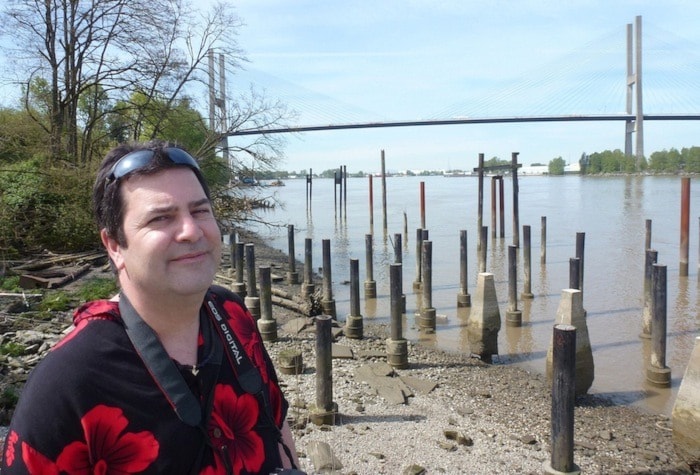An ancient aboriginal site on the Fraser River in Delta is being sealed over by Port Metro Vancouver, much to the distress of amateur archaeologists who regularly prowl the shoreline in search of artifacts.
The 9,000-year-old Glenrose Cannery site, one of the Lower Mainland's oldest and richest pre-contact locations, was partly capped two years ago when the South Fraser Perimeter Road was built, but the foreshore is now being rip-rapped by the port as part of a habitat banking project.
The aim is to create a marsh bench that enhances salmon habitat, which can be used as a credit to offset future damage to habitat from port projects like the expansion of Deltaport.
Port officials say the work will also protect the artifacts in the area from looters, but collector Tony Hardie doesn't see the logic.
"It just doesn't make any sense," he said. "They're using heavy machinery and covering it with rocks. What they're doing right now is doing more damage than 50 collectors could have done over the next 50 years."
The tide currently erodes the bank and releases a steady stream of arrowheads, beads, carving tools and other artifacts that are snapped up by Hardie and others.
"It's a shame it's going to be covered forever," Hardie said. "It's the end of an era and the end of the Glenrose cannery site as we know it."
The project to create 1.5 hectares of habitat along Annieville Channel immediately upstream of the Alex Fraser Bridge is costing the port about $1.5 million in all.
Gord Ruffo, program manager for Port Metro Vancouver's habitat enhancement program, said there are few intertidal marsh benches left in the Fraser River estuary – 70 per cent of them have been lost over time to diking and other development – and the Glenrose site is a good place to create a new one.
The resulting marsh is expected to provide rearing habitat for juvenile salmon, particularly Harrison River chinook, as well as feeding, nesting and refuge areas for foraging birds.
Ruffo said the work is supported by area First Nations that are concerned about disrespect to artifacts or human remains by illegal collectors.
"They wanted a way to stop the erosion and stop the artifacts from being exposed," he said.
Ruffo said the work is being monitored by archaeologists working on behalf of aboriginal bands in case any artifacts are uncovered during construction.
Some First Nations consider artifact hunting as disrespectful as grave robbing in a cemetery.
Hardie insists he's an ethical collector.
"I'm not a looter," he said. "It's a good thing to stop people from digging and damaging any heritage site of any kind. But I've never had a problem when people do what I call salvage archaeology – walking an eroding river bank where the artifacts are going to be damaged, destroyed and washed away."
